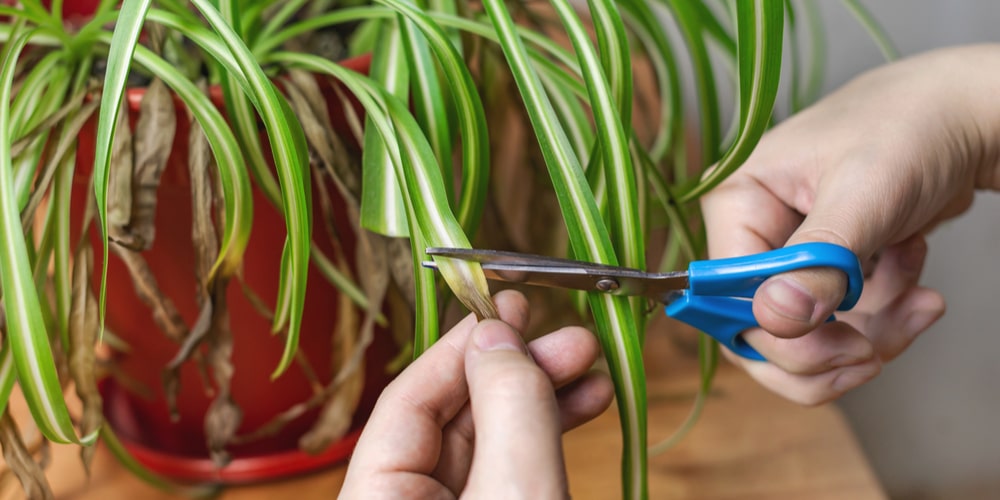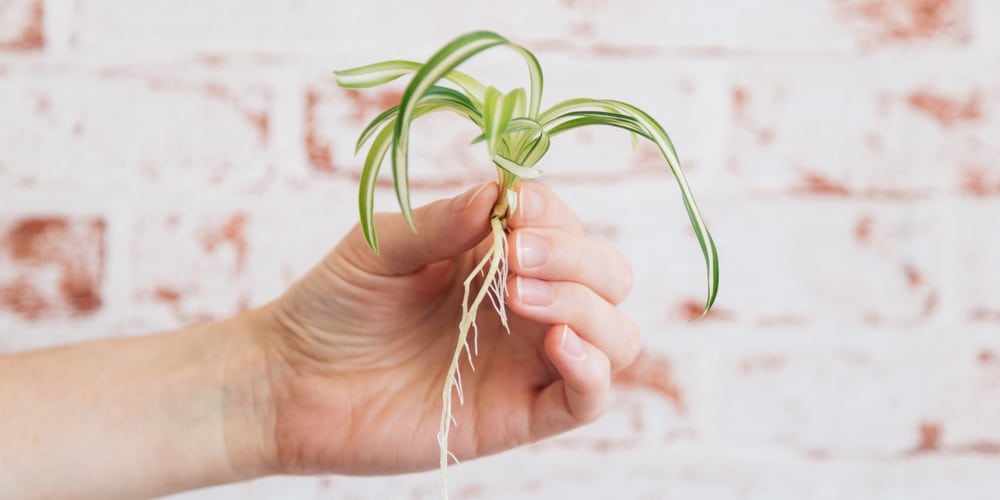Spider plants are one of the most popular houseplants for their easy care and ability to thrive in various conditions. But even the hardiest of plants can experience problems from time to time. One common issue is spider plant leaves wilting or drooping.
Although hardy and forgiving, spider plants can suffer from a variety of issues. One common problem is drooping leaves, which can be caused by several factors. If you notice your spider plant’s leaves are wilting or drooping, there are a few things you can do to fix the problem.
Causes of Drooping Spider Plant Leaves
Prized for their lush foliage, spider plants can quickly become limp and sad-looking if not properly cared for. When left in this condition for long, the leaves may begin to turn brown and drop off. There are several reasons why your spider plant’s leaves may be drooping, including:
Overwatering or Underwatering
This is a common issue not just for spider plants but also for a variety of other houseplants. If your spider plant is wilting, it’s likely due to too much or too little water. In general, watering once a week is ideal, allowing the soil to dry out in between waterings.
Before you give your spider plant some water, check the soil first. If it’s still moist, wait it out for another day, and only water if the soil is dry to the touch.
If the leaves are wilting and drooping, it’s a sign that you’re overwatering your plant. On the other hand, if the leaves are brown and crispy, it’s a sign of underwatering.
Incorrect Light Conditions
Spider plants need bright, indirect light to thrive. If they don’t get enough light, the leaves will start to droop as the plant stretches out to try and reach a light source. As indoor plants, spider plants do best near a sunny window.
If your spider plant is drooping, take a look at its location. Is it in a spot that gets direct sunlight? If so, move it to an area with indirect or filtered light.
Temperature Stress
Too much heat or cold can cause spider plant leaves to droop. If the temperature is too high, the leaves will curl up as the plant tries to protect itself from the heat. On the other hand, if the temperature is too low, its leaves may turn brown and drop off.
Again, it’s crucial to monitor the temperature around your spider plant and make sure it stays within a comfortable range.
Fertilizer Burn
Spider plants are relatively low-maintenance when it comes to fertilizer, but too much of a good thing can still be harmful. If you notice the tips of your spider plant’s leaves turning brown, it’s likely a sign of fertilizer burn.
Fertilizer burn is caused by incorrectly diluted fertilizer or by over-fertilizing. When this happens, the plant’s roots cannot absorb all of the nutrients, and the excess is absorbed by the leaves. This can cause them to turn brown and crispy.
What to Do If Your Spider Plant’s Leaves are Drooping
When your spider plant’s leaves are starting to look sad and droopy, don’t frown just yet! It may not be too late, and there are some things you can do to save and restore your plant. Some of these things may include but are not limited to:
- Check your watering schedule and make sure you’re not overwatering or underwatering your plant.
- Monitor the temperature around your plant and make sure it’s not too hot or too cold.
- Move your plant to a spot with bright, indirect light. Placing your spider plant near a sunny window is often ideal.
- Ensure that you’re not over-fertilizing your plant and that any fertilizer is appropriately diluted.
Preventing Drooping Spider Plant Leaves
A drooping spider plant is not a happy spider plant. The leaves of this popular houseplant droop for many reasons, including too much or too little water, improper lighting, and low humidity. Many factors can contribute to a spider plant’s happiness, but you can do a few key things to prevent drooping leaves.
- Water your spider plant once a week, allowing the soil to dry out between waterings.
- Use filtered light, or never place them under direct sunlight.
- Increase the humidity around your spider plant by misting it regularly or putting it on a pebble tray.
- Fertilize your spider plant every other month using a half-strength solution.
Spider plant leaves wilting: Final Thoughts
When your spider plant’s leaves start to droop, there are still some things you can do to save it. While preventative measures are always ideal, sometimes even the best care can’t prevent a drooping spider plant.
Knowing what to look for and understanding how to deal with this common issue, you can help your spider plant recover and keep it looking its best.
Related Article: The Best Soil For a Spider plant


